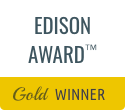Regulations and Standards Governing Safe Exposure of Workers to PAA Fog
In 1970 Congress passed the Occupation Safety and Health Act creating the OCCUPATIONAL SAFETY AND HEALTH ADMINISTRATION (OSHA) to ensure safe and healthful working conditions for working men and women by setting and enforcing regulations and by providing training, outreach, education and assistance. OSHA is part of the United States Department of Labor. Section 1910.1000 of chapter 29 CFR entitled Air Contaminants contains the standards pertaining to hydrogen peroxide, acetic acid, and PAA. OSHA has promulgated standards that control workers (including hospital personnel) exposure to air contaminants. Hydrogen peroxide, acetic acid, and PAA, have been classified as substances to which OSHA has the responsibility to establish safe exposure levels.
PAA is the disinfectant of choice utilized in Altapure’s AP-4 ™ because of its rapid killing power and green end products; its chemical structure classifies it as PAA. PAA is an equilibrium product produced when water, hydrogen peroxide, and acetic acid (vinegar), are combined. Acetic acid is an organic acid that gives vinegar its sour taste and smell. Vinegar is created by the natural fermentation of various alcoholic foodstuffs by acetic acid producing bacteria.
The low odor threshold for acetic acid is 0.074 ppm, which means it can be detected at a very dilute concentration in the air far below its allowable exposure of 10 ppm for an 8 hour period (PEL).
OSHA has established a Permissible Exposure Limit (PEL) for each chemistry to which workers may be exposed. Section 1910.1000, 29 CFR, Table Z-1 Limits for Air Contaminants sets forth the PEL for acetic acid, hydrogen peroxide and PAA. PEL is defined as the average concentration of a chemical in the air to which a worker may be exposed over a specific time period (usually 8 hours).
Table Z-1 shows that acetic acid has a PEL of 10 ppm (parts per million) for an 8 hour period, while a 1 ppm limit has been established for hydrogen peroxide.
* OSHA PEL – The current Occupational Safety and Health Administration (OSHA) permissible exposure limit (PEL) for hydrogen peroxide is 1 part per million (ppm) parts of air (1.4 milligrams per cubic meter (mg/m^3) as an 8-hour time-weighted average (TWA) concentration [29 CFR 1910.1000, Table Z-1]. * NIOSH REL The National Institute for Occupational Safety and Health (NIOSH) has established a recommended exposure limit (REL) for hydrogen peroxide of 1 ppm (1.4 mg/m^3) as a TWA for up to a 10-hour workday and a 40-hour workweek [NIOSH 1992].
Although a specific PEL limit has not been officially established for PAA, the Environmental Protection Agency (EPA) has established an AEGL-1 equivalent to OSHA’s 1 ppm for an average 8 hour period.
Meeting the OSHA level for the Altapure application may be established by the use of the Draeger Accuro device in conjunction with the sampling tubes provided. Because the 1 ppm is an average over 8 hours, the PAA present at any one time may exceed 1 ppm.
Altapure strongly recommends that the users of the AP-4 ™ system conduct regular monitoring of the cleaning process to ensure that the PEL limits are met. Various pieces of monitoring equipment are available including a product made by Drager and passive monitoring badges. The American Industrial Hygiene Association operates a laboratory for analysis of the badges. The level of acetic acid vapor and hydrogen peroxide may be lowered by either running the AP-4 ™ internal air reprocessor system and/or the facility exhaust or HVAC systems longer. Any questions should be referred to an industrial hygienist.
Copyright © 2015-2020, Altapure, LLC, All Rights Reserved.
CR 12/27/16 V. 02

